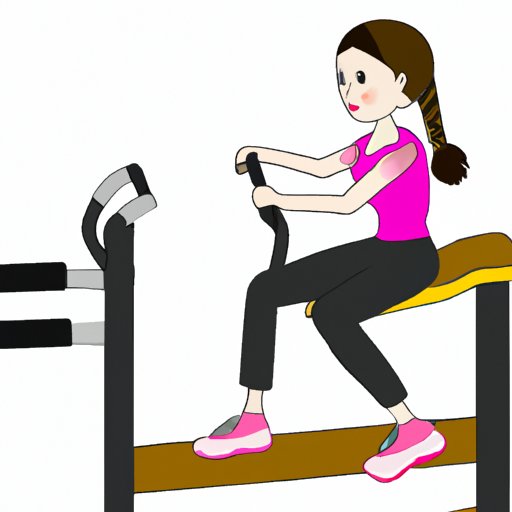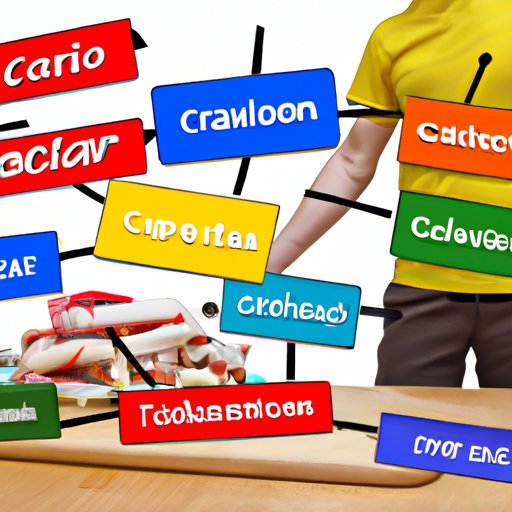Introduction
A calorie deficit is the difference between the number of calories you consume and the number of calories you burn. Creating a calorie deficit is essential for losing weight, as it forces your body to use stored fat for energy. This article will provide an overview of the steps needed to create a calorie deficit and achieve weight loss goals.
Create a Calorie Deficit Plan
The first step in creating a calorie deficit is to determine your current caloric intake. The best way to do this is by tracking your food intake for several days. Once you have an idea of your current intake, you can calculate the amount of calories needed to create a deficit. According to Harvard Health Publishing, “If you create a 3,500-calorie deficit, you will lose 1 pound of fat; if you create a 7,000-calorie deficit, you’ll lose 2 pounds.”
After calculating the amount of calories needed to create a deficit, it is important to set a plan to reduce calories and create a deficit. For example, reducing your daily caloric intake by 500 calories per day and burning 500 calories through exercise can create a 1000-calorie deficit, which leads to a two-pound weight loss over the course of a week.
Understand Macronutrients and Calories
In order to create a calorie deficit, it is important to understand the role macronutrients play in creating a deficit. Macronutrients are the three main nutrients that provide energy: carbohydrates, proteins, and fats. Each gram of these macronutrients contains a certain number of calories. Carbs and proteins each contain four calories per gram, while fats contain nine calories per gram.
It is also important to understand how different macronutrients affect weight loss. Research suggests that diets high in protein and low in carbs are effective for weight loss.1 Eating healthy sources of protein and limiting processed carbs can help create a calorie deficit and promote weight loss.
Track Your Calories
Tracking your calories is an important part of creating a calorie deficit. Keeping track of your food intake allows you to monitor your progress and make adjustments as needed. Tracking your calories can also help you identify areas where you can cut calories and create a deficit.
When tracking your calories, it is important to be accurate and consistent. Use an app or website to log your meals and snacks and keep track of your calories. Be sure to include all food and beverages, including condiments, dressings, and sauces.
Adjust Your Diet
Once you have determined your calorie needs, it is time to adjust your diet. To create a calorie deficit, reduce your calorie intake by eating smaller portions and cutting out unhealthy foods. Choose nutrient-dense foods such as fruits, vegetables, whole grains, lean proteins, and healthy fats. These foods will help you feel full and satisfied while still creating a calorie deficit.
In addition to reducing your calorie intake, it is important to focus on eating a balanced diet. Eating a variety of nutritious foods is essential for maintaining good health and achieving weight loss goals.

Exercise to Burn More Calories
In addition to reducing your calorie intake, exercise is key for creating a calorie deficit. Exercise helps burn extra calories and boost metabolism, making it easier to create a deficit. Cardio exercises such as running, biking, and swimming are great for burning calories and promoting weight loss. Strength training can also help build muscle, which boosts metabolism and increases calorie burn.
When incorporating exercise into your routine, it is important to find activities you enjoy. Try different types of exercises and find something that you look forward to doing. Exercise should be fun and rewarding, not a chore.
Conclusion
Creating a calorie deficit is essential for achieving weight loss goals. To start a calorie deficit, determine your current calorie intake, calculate the amount of calories needed to create a deficit, and set a plan to reduce calories. It is also important to understand macronutrients and calories and track your intake. Adjusting your diet and exercising regularly can also help create a calorie deficit. With the right plan and dedication, you can achieve your weight loss goals.
(Note: Is this article not meeting your expectations? Do you have knowledge or insights to share? Unlock new opportunities and expand your reach by joining our authors team. Click Registration to join us and share your expertise with our readers.)
